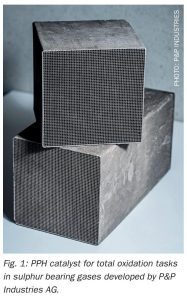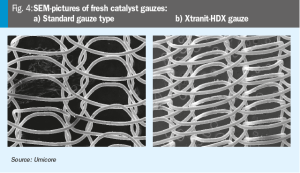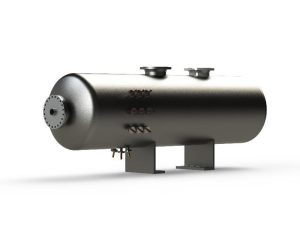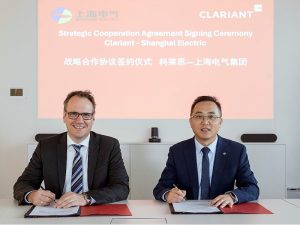
2025 AIChE Ammonia Safety Symposium
Venkat Pattabathula reports on the American Institute of Chemical Engineers’ (AIChE) Safety in Ammonia Plants and Related Facilities Symposium, held from September 7–11th 2025, in Atlanta, Georgia, USA.

Venkat Pattabathula reports on the American Institute of Chemical Engineers’ (AIChE) Safety in Ammonia Plants and Related Facilities Symposium, held from September 7–11th 2025, in Atlanta, Georgia, USA.

Platinum-promoted honeycomb catalyst bricks offer function as total oxidation catalysts that convert all oxidisable species under appropriate temperature and oxygen conditions. P&P Industries presents a case for a H2S-rich gas stream – relevant to the fibre industry, Claus offgas treatment, and other chemical sectors.

Clariant has signed a supply agreement with SYPOX to manufacture and deliver catalysts for what is claimed to be the world’s largest electric steam methane reformer (e-SMR). The project combines SYPOX’s electrical reformer technology with Clariant’s expertise to enable syngas production with significantly reduced CO2 emissions. Scheduled to begin operations in 2026, the e-SMR will use 10 MW of renewable electricity to generate approximately 150 t/d of syngas.

Axens, pending regulatory approval, to become sole owner of Eurecat

Johnson Matthey (JM) says that the three methanol production trains of Inner Mongolia Baofeng Coal-based New Materials Co., Ltd., a wholly owned subsidiary of Ningxia Baofeng Energy Group, were successfully commissioned in November 2024, February 2025, and March 2025, respectively. Located in the Wushenqi Sulige Economic Development Zone of Ordos City, Inner Mongolia Autonomous Region, this plant employs Johnson Matthey’s advanced methanol synthesis technology and catalysts, making it the largest single methanol plant in the world. Inner Mongolia Baofeng also stands as one of the largest chemical enterprises globally that produces polyethylene and polypropylene by using coal as a substitute for oil.

Umicore’s latest research and development has resulted in a novel catalyst for the Ostwald process, aiming to enhance efficiency and sustainability in high-pressure nitric acid production.

Clariant to manufacture catalyst for SYPOX e-SMR - planned to produce 150 tons of syngas a day

Clariant Catalysts signs strategic cooperation agreement with Shanghai Electric to 'jointly foster innovation in sustainable energy solutions'

Johnson Matthey Plc (JM) says that it has reached an agreement to sell its Catalyst Technologies (CT) business to Honeywell International, Inc. for £1.8 billion ($2.45 billion) on a cash and debt-free basis.

Clariant says that its ShiftMax 100 RE catalyst is now in operation at INERATEC’s Era One e-fuels production plant in the Frankfurt Hoechst industrial park. The facility will transform around 8,000 t/a of CO2 into up to 2,500 t/a of synthetic fuels and waxes. The e-fuels produced at the INERATEC facility can be used as […]